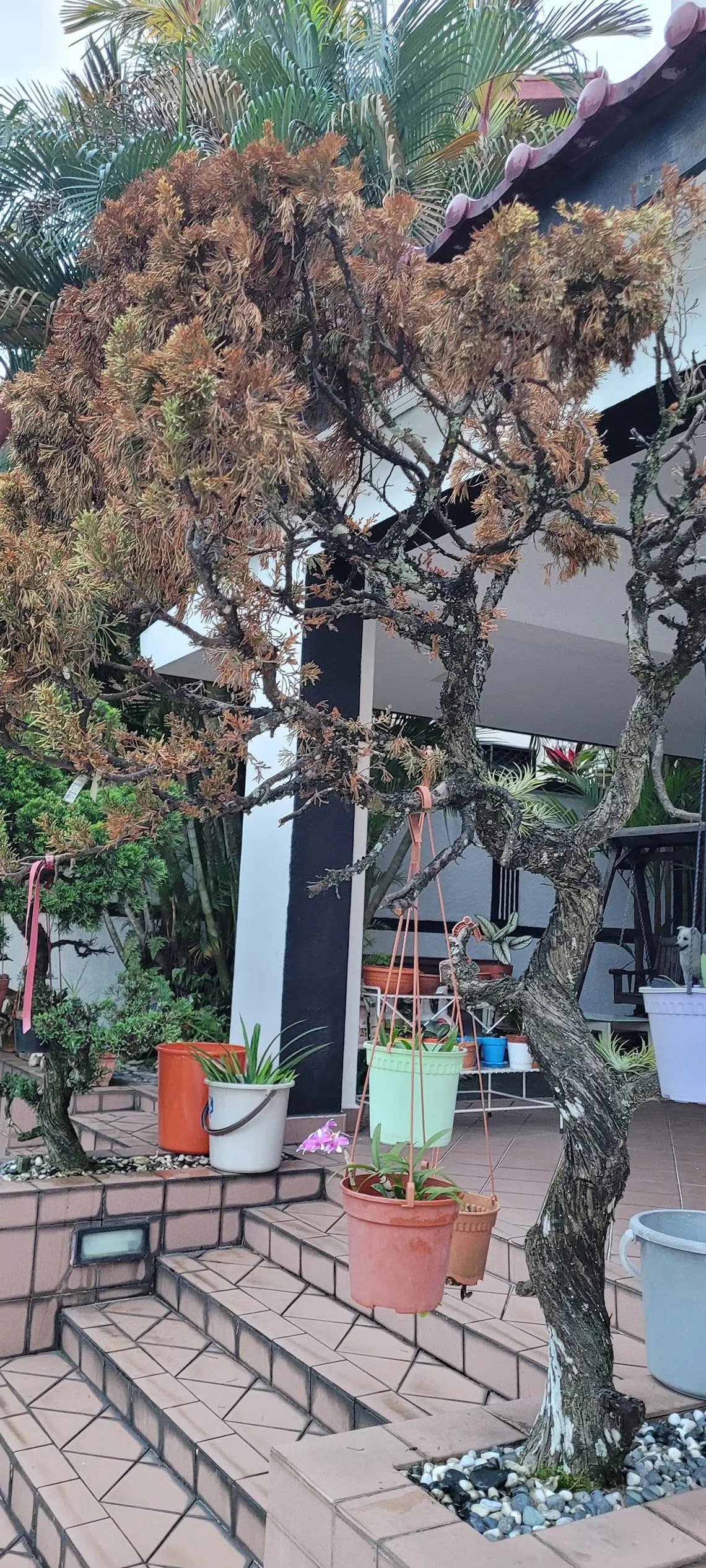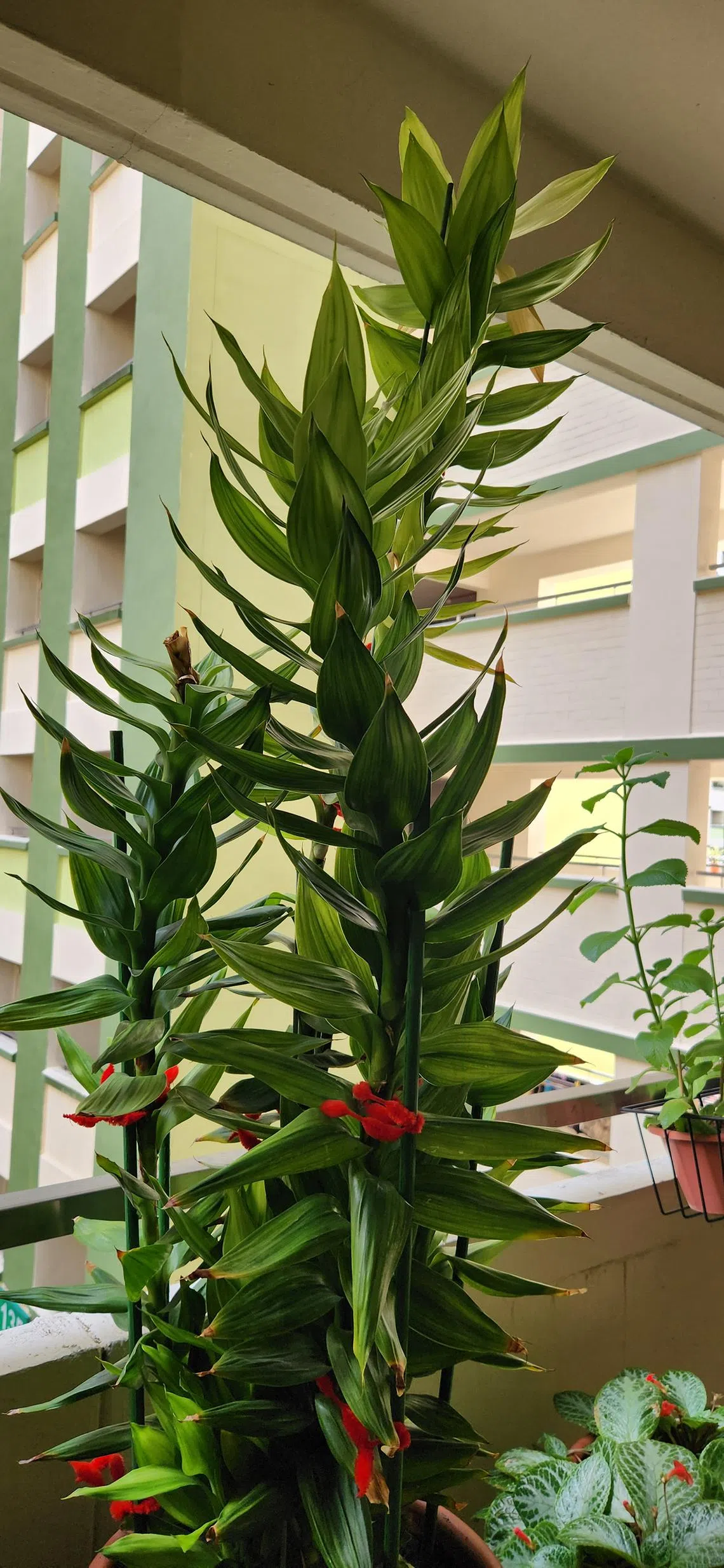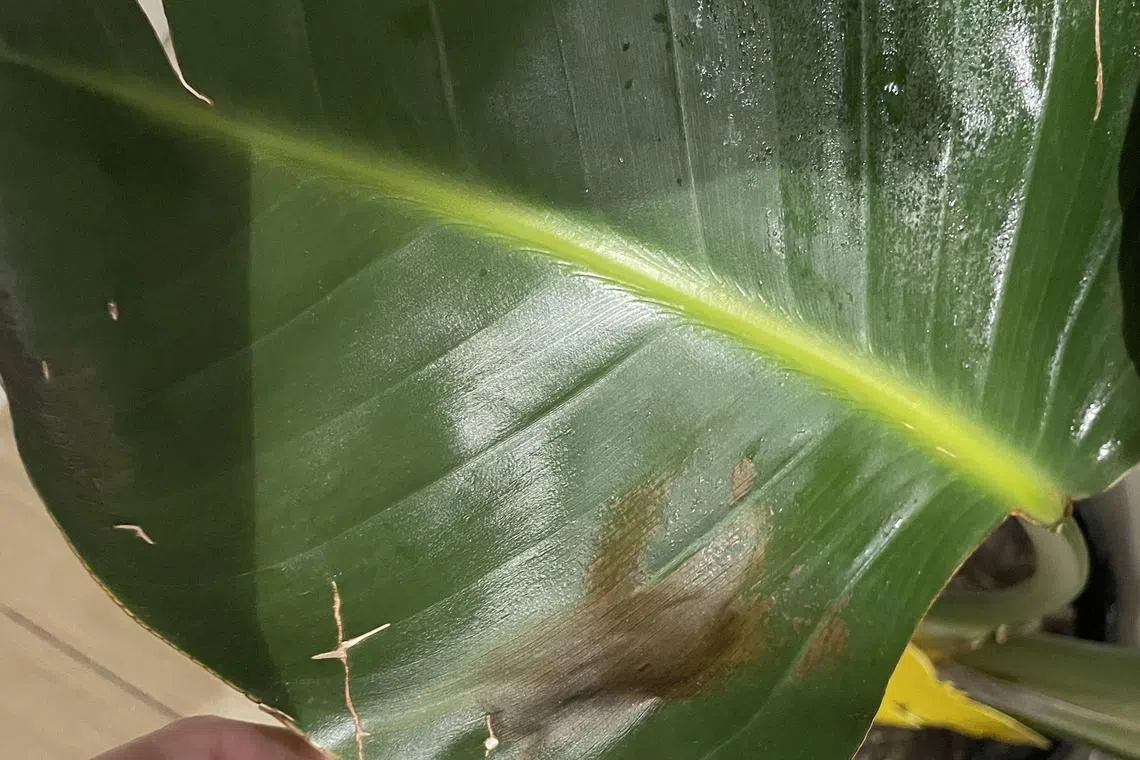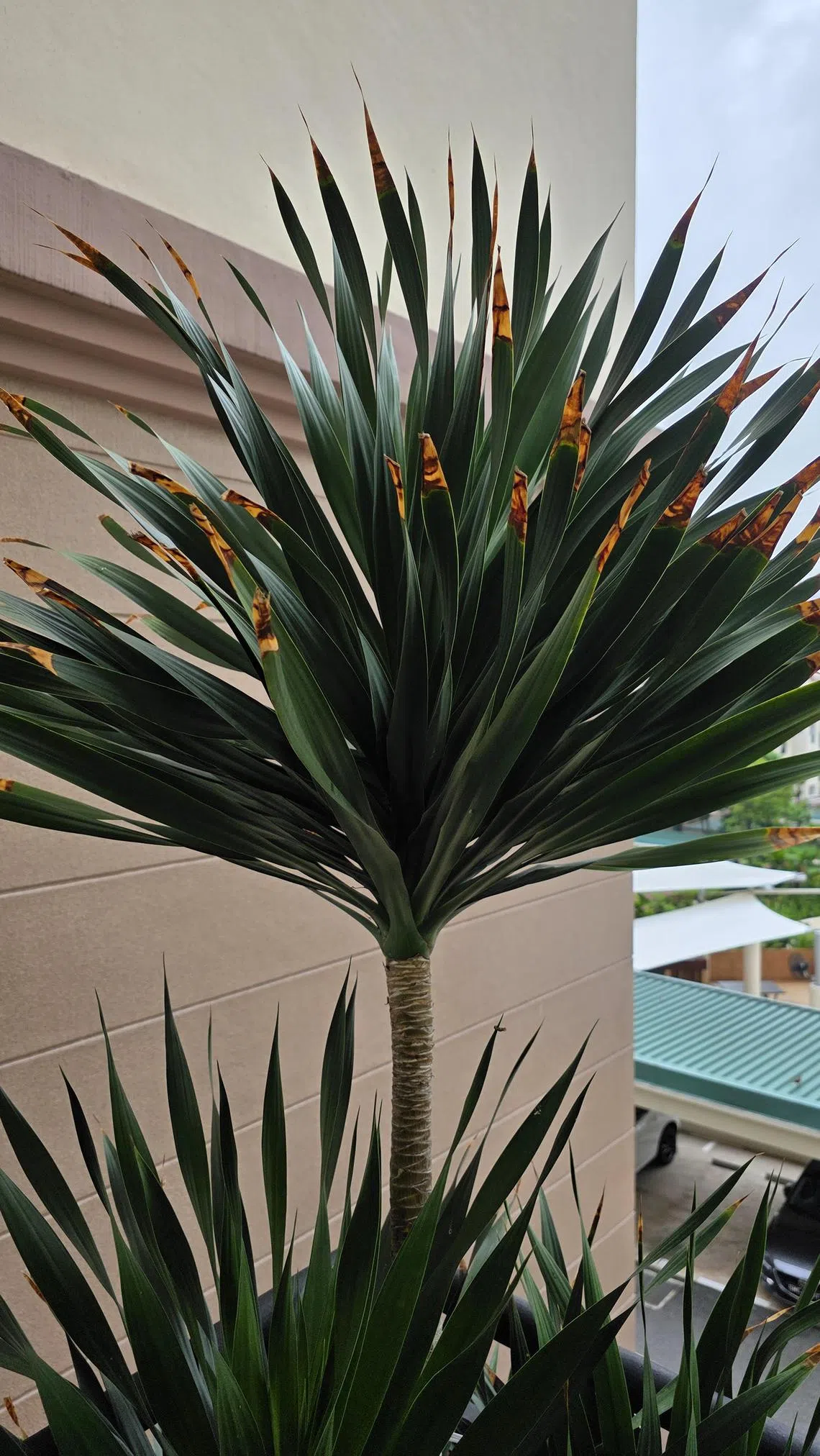Root Awakening: Pests on mugwort could be aphids
Sign up now: Get ST's newsletters delivered to your inbox

High nitrogen promotes fast growth, which can lead to pest infestations.
PHOTO: WOON LEE
Wilson Wong
Follow topic:
Isolate infested plant
I bought some fresh mugwort from a wet market and picked a few healthy stalks to root in water. Five days later, I introduced the rooted mugworts to an aeroponic system. I used rock wool as the growing medium.
I discovered some insects on the leaves and stalks about 10 days later. I trimmed and rinsed the mugworts to rid them of the insects, and moved the plants to a separate hydroponic system. My other vegetables on the aeroponic system are not affected.
In the current hydroponic system, the grow light is kept on for 12 hours a day. The water is supplemented with hydroponic nutrients with 1.5 EC (electrical conductivity).
I gave two stalks of mugwort to my sister when I first planted mine. She has planted them in soil and placed them in her garden for sun. She is not experiencing the infestation.
Is mugwort not suitable to be grown outside soil? How can I get rid of the infestation?
Woon Lee
The pests on your mugwort appear to be aphids. It is not unusual to find pests thriving on plants that have been brought indoors from outside. Also, in contrast to plants grown outdoors, there are no predators indoors that can control the pest population.
It is better to isolate your infested plant while you treat it to eliminate the pests.
Aphids reproduce quickly and can be difficult to eradicate using organic pesticides. You may want to use a contact chemical pesticide, such as cypermethrin, with a rapid knock-down effect.
Make a solution of the pesticide according to the label’s instructions and soak the plant’s aerial parts in it for several minutes for proper coverage. Remove the plant from the solution when all visible pests are dead.
Repeat this treatment on a regular basis until all pests are eradicated. Check your plant regularly to see if new pests emerge between treatments. When total eradication has been achieved, stop treatment for at least two weeks. You can then take stem cuttings, wash them thoroughly and use them to start new plants for your hydroponic system.
You need to strike a balance between rapid growth and plant health by changing the fertiliser formulation to one with lower nitrogen content for hydroponic growing. High nitrogen promotes fast growth, which can lead to pest infestations.
Decline of tree could be due to poor drainage and aeration

Any procedure to improve drainage will likely disturb the roots and worsen the situation.
PHOTO: CHAN MEI YOKE
One of my friend’s two trees is thriving, but the other is dying. What is wrong and how can she save it?
Chan Mei Yoke
The tree seems to have been planted in a very small container, which has likely restricted its root growth. The tree’s extensive root mass, coupled with compacted soil in the planter box, could have led to poor drainage and aeration in the root zone during the recent wet weather. This may have suffocated and killed the roots, and its subsequent inability to take up water has likely caused the visible aerial parts to dry up as well.
There is not much to be done now, as any procedure to improve the soil drainage will likely disturb the roots and worsen the situation. Avoid planting trees in small, constrained spaces in the future.
Check soil of Dracaena

The brown leaf tips could be due to the usage of tap water, which contains fluoride.
PHOTO: EVELYN AW
What is wrong with my bamboo plants? The leaves are not green and their tips are brown.
Evelyn Aw
First, the brown leaf tips could be due to the usage of tap water to water your plants. Tap water contains fluoride, which this species is sensitive to.
As for the yellowing growth, check if the soil is suitable for this Dracaena. If it consists of largely organic matter like cocopeat, it could hold too much moisture, leading to a wet root zone with poor aeration. This can cause roots to become unable to absorb nutrients for the plant.
Cocopeat is a common component in lightweight potting mixes. It tends to break down over time, and the process robs the plant of nutrients it requires for growth. It is also known to have high salt content. If cocopeat is a major component of your growing mix, consider replacing it with a mix that has a more stable organic component such as mature compost or peat moss. However, try to avoid disturbing the roots while doing so. Fertilise your plants if you have not already done so.
You should also prune the towering stem, as it does not get sufficient sunlight in its current position.
Leaves could have been damaged by heat or sunburn

Although the Bird of Paradise thrives in direct light, this leaf could have been scorched by heated glass.
PHOTO: YEO SI MIN
What is wrong with my Bird of Paradise? It had a pest infestation when I bought it a few weeks ago. I trimmed the damaged leaves and pruned other parts, and spray pyrethrins once a week at night when it is cooler. Its leaves are curling inwards at the edges. I keep it near a north-facing floor-to-ceiling window in a high-rise unit, so it gets plenty of sun.
Separately, it is becoming rootbound and I plan to repot it once the pest infestation is dealt with. How can I encourage it to flower?
Yeo Si Min
The brown part of the leaf appears to be an injury. Is the affected part resting on the window glass? If so, the leaf could have been scorched by the heated window glass. Ensure the leaves do not come into contact with the glass.
Your plant could have been grown under shade in the nursery and it will take time for it to adapt to your balcony’s higher light levels. Any new leaves should be able to withstand the increased light intensity, but older leaves may need some protection.
Is your plant the White Bird of Paradise (Strelitzia nicolai)? This species is often seen growing outdoors under direct light and will need to reach a large size before flowering.
Dracaena is sensitive to salt and fluoride in water

Limit the use of chemical fertilisers, as their salt content can accumulate in the root zone.
PHOTO: CEPHAS LOKE
The tips of the leaves are dry. What is wrong with my plant?
Cephas Loke
Dracaena plants are generally sensitive to fluoride in municipal water and its toxicity to the plant manifests as brown leaf tips. You may need to use fluoride-free water, such as rainwater, to irrigate your plant.
Also, limit the use of chemical fertilisers, as their high salt content can accumulate in the root zone. Water your plant regularly and do not let it dry out completely.
Answers by Dr Wilson Wong, an NParks-certified practising horticulturist and parks manager. He is the founder of Green Culture Singapore and an adjunct assistant professor (Food Science & Technology) at the National University of Singapore.
Have a gardening query? E-mail it with clear, high-resolution pictures of at least 1MB, if any, and your full name to . We reserve the right to edit and reject questions.

